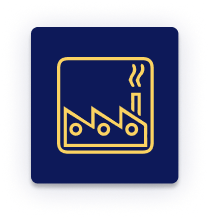- csem@csem.com
- (888)701-2736
- Special Treat
- What's New
JUST IN TIME
SAFETY TRAINING
24/7
MULTIPLE
LANGUAGE OPTIONS
888-701-2736
JUST IN TIME
SAFETY TRAINING
24/7
MULTIPLE
LANGUAGE OPTIONS
888-701-2736
SAFETY TRAINING
24/7
MULTIPLE
LANGUAGE OPTIONS
SAFETY TRAINING
24/7
MULTIPLE
LANGUAGE OPTIONS

Several sections in the OSHA 1926 standards require engineering controls in construction projects. Engineering design safety demands the incorporation of these controls.
To properly engineer for safety, there needs to be a new level of communication and understanding between engineers and safety professionals. There is need for an awareness of the
positive influence safety professionals can have on the design process if they are involved from the very beginning of the process.
In contrast to other types of controls, which often centre their attention on the employee who is put in danger by the hazard, these controls centre their
attention on the danger itself. The fundamental idea behind engineering controls is that, to the greatest extent that is practically possible, the working environment and the task
itself should be designed to either completely remove dangers or significantly
lessen their exposure. Even though this method is described as engineering control, it does not imply that an engineer is needed to complete the task.
The goal of the course is to provide students with information on how to
anticipate and recognize construction hazards and ways to eradicate them with adequately-planned design features.

training requirements of 29 CFR 1910.120(e)(3)(i) defined by Federal OSHA HAZWOPER for general industry.

training requirements of 29 CFR 1926.65(e)(3)(i) defined by Federal OSHA HAZWOPER for construction sector.

HAZWOPER training requirements for EPA and State OSHA guidelines.
This training program is designed for owners, contractors, design/build firms, architects and engineers involved in the construction of any type of building.

Introduction
Overviews of Design for Construction Safety (DfCS)
Conventional” Construction
Reducing Electrical Hazards
Significance of Design for Constructon Safety (DFCS)
Personal Protective Equipment (PPE)
Hazard Identification
Risk Assessment
Application of Hierarchy of Controls
OSHA Violations